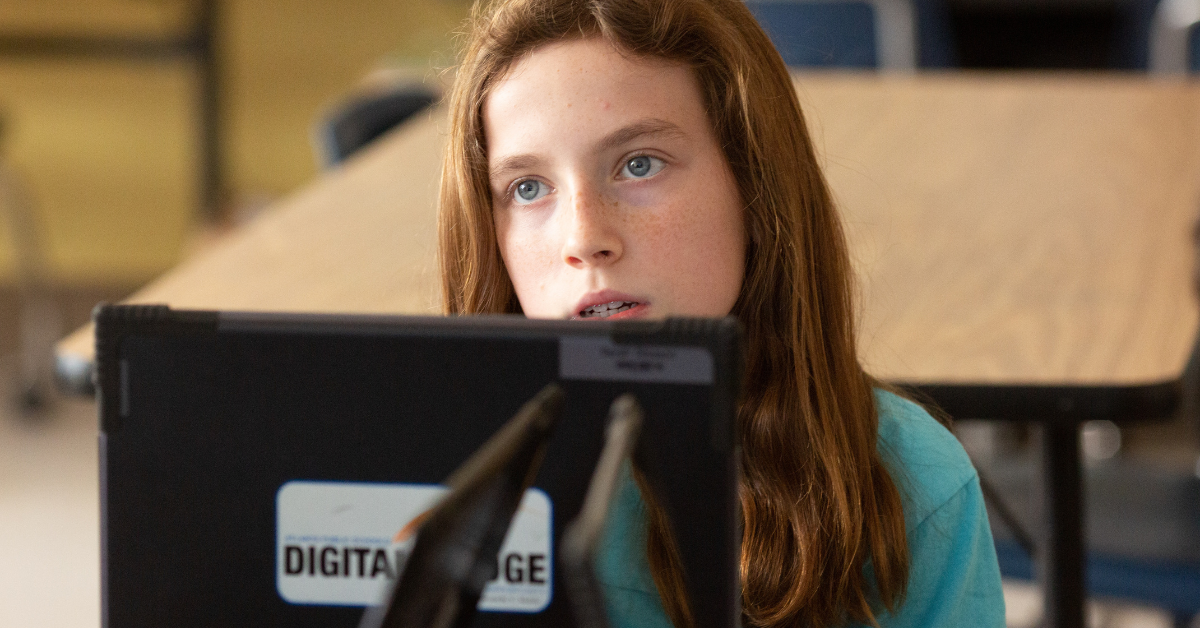
Dec 19, 2022 9:58:38 AM
I was eight years old when Sal Khan founded Khan Academy, a nonprofit, online platform that provides a free, world-class education for anyone, anywhere.
In grade school, I used Khan Academy for extra help. But I didn’t go it alone. Spending chunks of time on the platform at school – alongside my classmates, on our county-owned Chromebooks and headphones – was the perfect method to grasp formulas.
Knowing we were all being timed on similar activities was the only way I knew I would stay motivated to learn and encouraged to collaborate with others. My teacher was there to provide immediate support if necessary. It just seemed like the perfect setup.
From elementary through high school, all my teachers were very effective in using Khan Academy for in-class support. Without it, I don't think I would have been successful in math throughout my academic career.
It's strange to have taken that for granted. Now, many years later, we’re seeing how the COVID-19 pandemic forced online instruction in isolation on students, producing dismal results.
Khan Is Better with Friends
Using the internet to widen access to education is not revolutionary, but Khan Academy set a different type of standard for platforms of its kind.
Although it has a plethora of hand-holding video instruction in arts and science subjects, its core remains math, ranging from basic addition and multiplication to the more advanced reaches of algebra and calculus, the majority narrated by Khan himself.
It charts progress and highlights weak points for students, making it simple for parents to help out with homework without having to go down what could be a triggering memory lane, and for educators to track progress to fine-tune their own teaching methods.
Khan told Edutopia in 2020 that while technology provides flexibility for teachers, it should be used as their support.
“No one should have the delusion that technology is a replacement for a physical environment,” Khan said.
In-Class Support Makes Math Understandable and Enjoyable
The first national report card in three years illustrated frightening math scores, including the average fourth-grade math score at its lowest level since 2005, and the average eighth-grade math score decreased to its lowest level since 2003.
Khan recently spoke with CNN’s Fareed Zakaria about these results, and how online resources in isolation served as a large contributor to the sharp decline during the COVID-19 pandemic.
“When Khan Academy is used best, it’s used inside of a classroom with people next to each other. Students are able to work at their own pace on things that are relevant to them. The teacher is able to walk around and have more personal, one-on-one interaction.”
According to Khan Academy’s website, 90% of U.S. teachers who have used the platform have found it effective, empowering them to support their entire classroom.
In his 2013 TED talk, Khan described the issue of scale in the classroom. To educate multiple students, teachers go through content at a uniform pace. Once the teacher covers a topic and gives an assessment, the cycle repeats.
This curriculum-first model doesn’t meet students where they are, creating huge gaps in a class that prevent future learning. Then, there are students in the same class who learn new content quickly and become bored or disengaged. The disturbing drop in test scores was caused by a lack of engagement during the pandemic's stages of virtual learning.
Khan says 30-60 minutes of extra practice every week on what is being taught in the classroom can contribute to achievement rates 40% faster than what they would’ve been before the pandemic started.
Khan Academy uses a unique algorithm to allow students to practice at their own pace, first filling gaps in their understanding and then accelerating their learning. The platform generates personalized recommendations for each student, displaying the best topic for them. It provides a problem set, tells them how they did on it and sends the results to the teacher.
Students develop a better relationship with math when they work at their own pace. This method works because it gives students control over their learning and motivates them to succeed.
That level of academic responsibility at this critical stage does not guarantee the best decisions, but it allows students to develop their academic performance and SEL skills with the full support of their teacher by their side.
In this way, students will feel less pressure to "perform" math and more incentive to enjoy it as an outcome.
Times have changed since I’ve been in grade school, but the same practical principles can still be applied.
Online resources are a great tool but they need to be used in conjunction with active classroom engagement. It is the only way students can build a firm foundation for long-term success in math.
Trinity Alicia is an editorial intern at EdPost based in Boston. Having studied journalism, film and Spanish at San Diego State University, Alicia has versatile experience in print, public relations and multimedia that she brings to the EdPost team. In her free time, she enjoys live music and bicoastal traveling.
Few issues in education spark more tension and debate than standardized testing. Are they a tool for equity or a burden on students? A necessary check on school systems or a flawed measure of...
Charter schools are public schools with a purpose. Operating independently from traditional school districts, they're tuition-free, open to all students, and publicly funded—but with more flexibility...
Despite the benefits of a diverse teaching force, prospective teachers of color fall out of our leaky preparation pipeline at every stage: preparation, hiring, induction, and retention. Here’s what...
Ed Post is the flagship website platform of brightbeam, a 501(c3) network of education activists and influencers demanding a better education and a brighter future for every child.
© 2020-2025 brightbeam. All rights reserved.
Leave a Comment